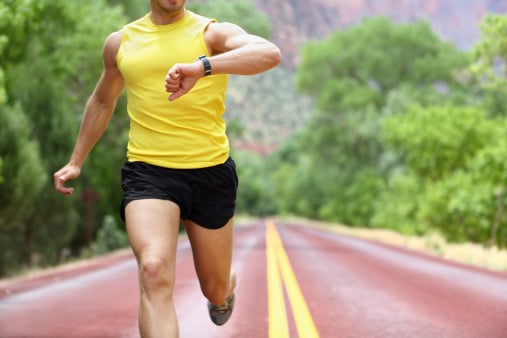 A recent tweet, included below, by one of our followers brought up the issue of posture and breathing for runners.
A recent tweet, included below, by one of our followers brought up the issue of posture and breathing for runners.
Freedom To Run @FreedomToRunUK said:
@PowerLung #runners don't usually know much about #posture and #breathing #chirunninguk
Freedom To Run’s message brings up the fact that many runners don’t know how crucial posture and breathing are for optimal performance and comfort. Many more runners simply forget or lose sight of the importance of posture and breathing for both their training and race days. We spend so much time and effort picking the next race, planning training routines and diet regimens, choosing the right training and race shoes, and the best race-day attire, that we often lose sight of the fundamentals. Considering you could be helping or hindering your training efforts, comfort, and performance with your posture and breathing, they merit a closer look.
Why Posture Matters
As we’ve mentioned, the posture issue is one of particular importance to runners because posture greatly influences air flow (our ability to breathe deeply), and your air supply significantly affects not only your comfort level when running, but your performance (more on the science behind this later).
Better posture means deeper breathing. You can see proof of this if you observe runners at the end of a marathon. They, especially the slower ones, are likely leaning forward and have their heads down. Compare that to the front runners who have their heads up and torsos erect. In doing so, they are maximizing their body’s ability to take in air to deliver oxygen to their blood.
Why Breathing Matters
Most of us would agree that breathing is important for exercise, but let’s take a closer look at what happens when you run. Breathing enables the oxygenation of your blood – and it makes sense that your body’s primary concern is to deliver oxygen to your respiratory system and muscles, because it doesn’t want to stop breathing. This means that as your respiratory muscles tire, your body automatically sends a signal for oxygenated blood to be redirected from larger muscles, such as your legs, to your respiratory muscles. (Learn more about how your breathing works here.) This is not ideal for a runner – you need your legs to go the distance.
How PowerLung Improves Breathing
Taking more air in to maximize blood oxygenation? Big help to runners! Because PowerLung actually trains the muscles used for breathing, it gives runners the strength AND muscle memory to stay strong for longer. With this improved muscle memory from using PowerLung, a runner is better able to use the abdominal muscles to do more of the work. This prevents other respiratory muscles – especially the smaller intercostal muscles – from tiring as easily. Remember, once the respiratory muscles tire, the body automatically sends a signal for oxygenated blood to be redirected from the larger muscles, especially the legs, to service the respiratory systems and muscles.
For long distance running, PowerLung training can be customized to increase endurance as well. And for the time when you need that extra sprint, you can even integrate PowerLung training into your sprint training.
Barry Jarvis, the inventor of PowerLung, was a sub 3-hour marathon runner. When he trained me, he continually reminded me to hold my head and torso up high all the way through any race because, in doing so,
- I could breathe better because I wasn’t bent over blocking the amount of air coming into my lungs, AND
- In a competitive race my opponents wouldn’t be aware that I might be struggling.
So take it from the PowerLung inventor and my best coach: Keep your head up high and your torso straight to get more air per breath. Use PowerLung to strengthen the muscles for muscle memory for breathing and posture. Click below to learn more about training your breathing.

